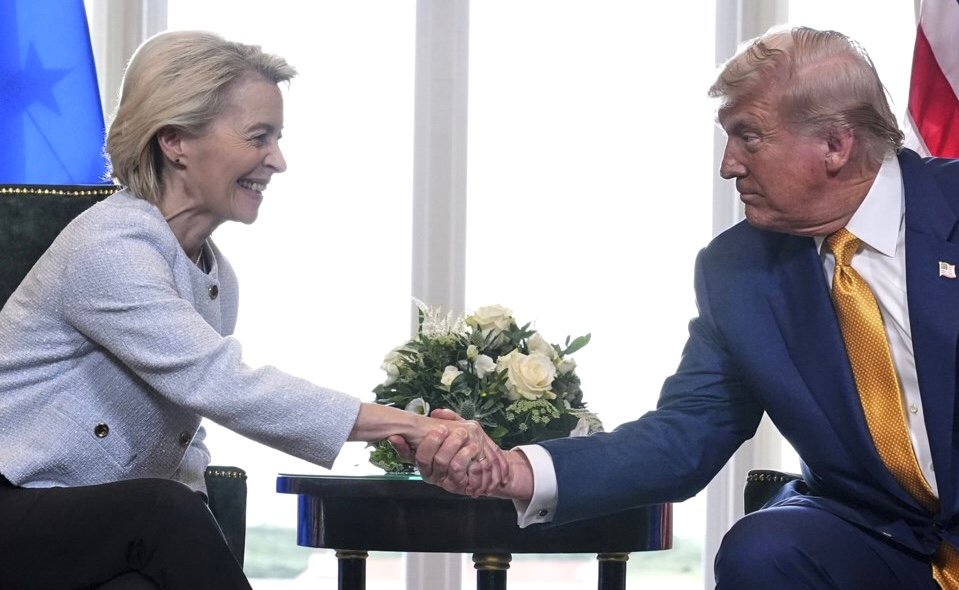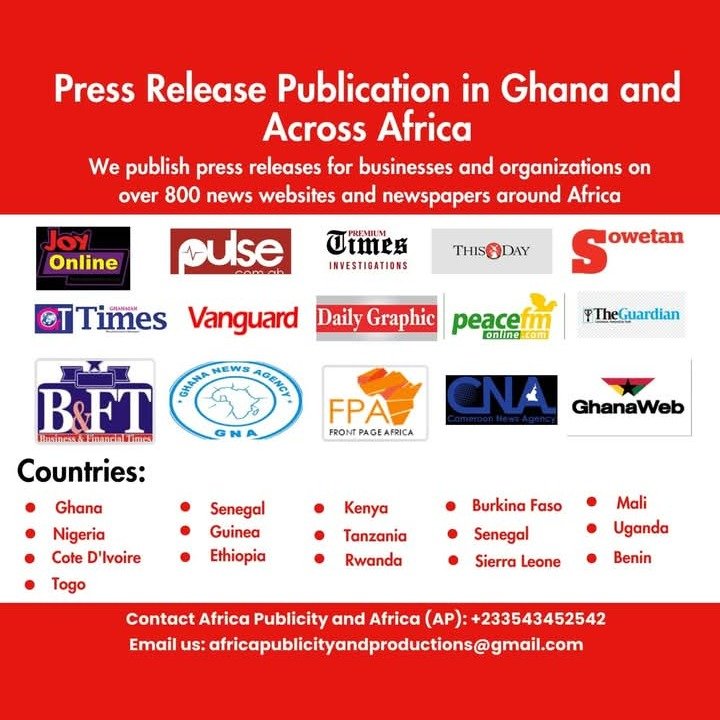The European Union (EU) and America have set a 15% tariff as they agree on a new trade framework.
The move is to help avert the threat of a trade war with a global shock.
The agreement between the US and the EU came on Sunday, July 27, 2025.
The sweeping announcement came after President Donald Trump and European Commission chief Ursula von der Leyen met briefly at Trump’s Turnberry golf course in Scotland. Their private sit-down culminated months of bargaining, with the White House deadline Friday nearing for imposing punishing tariffs on the EU’s 27-member countries.
“It was a very interesting negotiation. I think it’s going to be great for both parties,” Trump said. The agreement, he said, was “a good deal for everybody” and “a giant deal with lots of countries.”
Von der Leyen said the deal “will bring stability, it will bring predictability, that’s very important for our businesses on both sides of the Atlantic.”
Many facets will require more work
As with other, recent tariff agreements that Trump announced with countries including Japan and the United Kingdom, some major details remain pending in this one.
Trump said the EU had agreed to buy some $750 billion worth of U.S. energy and invest $600 billion more than it already is in America — as well as make a major military equipment purchase. He said tariffs “for automobiles and everything else will be a straight across tariff of 15%” and meant that U.S. exporters ”have the opening up of all of the European countries.”
Von der Leyen said the 15% tariffs were “across the board, all inclusive” and that “indeed, basically the European market is open.”
At a later news conference away from Turnberry, she said that the $750 billion in additional U.S. energy purchases was actually over the next three years — and would help ease the dependance on natural gas from Russia among the bloc’s countries.
“When the European union and the United States work together as partners, the benefits are tangible,” Von der Leyen said, noting that the agreement “stabilized on a single, 15% tariff rate for the vast majority of EU exports” including cars, semiconductors and pharmaceuticals.
“15% is a clear ceiling,” she said.
But von der Leyen also clarified that such a rate wouldn’t apply to everything, saying that both sides agreed on “zero for zero tariffs on a number of strategic products,” like all aircraft and component parts, certain chemicals, certain generic drugs, semiconductor equipment, some agricultural products, natural resources and critical raw materials.
It is unclear if alcohol will be included in that list.
“And we will keep working to add more products to this list,” she said, while also stressing that the “framework means the figures we have just explained to the public, but, of course, details have to be sorted out. And that will happen over the next weeks”
Further EU approval needed
In the meantime, there will be work to do on other fronts. Von der Leyen had a mandate to negotiate because the European Commission handles trade for member countries. But the Commission should now present the deal to member states and EU lawmakers — who will ultimately decide whether or not to approve it.
Before their meeting began, Trump pledged to change what he characterized as “a very one-sided transaction, very unfair to the United States.”
“I think both sides want to see fairness,” the Republican president told reporters.
Von der Leyen said the U.S. and EU combined have the world’s largest trade volume, encompassing hundreds of millions of people and trillions of dollars and added that Trump was “known as a tough negotiator and dealmaker.”
“But fair,” Trump said.
Trump has spent months threatening most of the world with large tariffs in hopes of shrinking major U.S. trade deficits with many key trading partners. More recently, he had hinted that any deal with the EU would have to “buy down” a tariff rate of 30% that had been set to take effect.
But during his comments before the agreement was announced, the president was sked if he’d be willing to accept tariff rates lower than 15%, and said “no.”
Source:Africa Publicity








